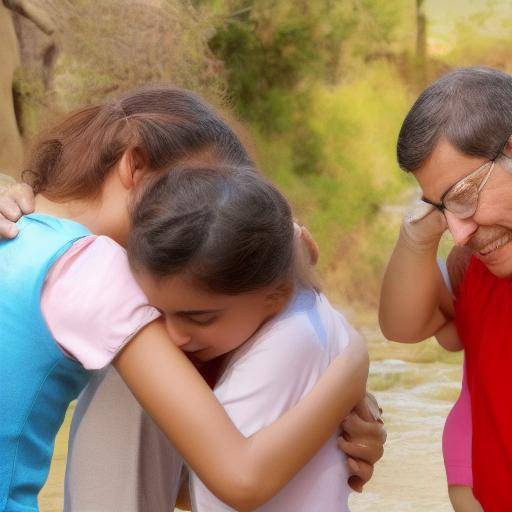
Introduction
Imagine being immersed in nature, feeling the soft murmur of the wind among the trees, perceive the fresh aroma of the earth and observe the dance of the leaves. This experience can be the perfect scenario to develop the practice of mindfulness, a technique that allows us to be present at the moment, connecting with our mind and body, to find emotional well-being. In this article, we will explore how to integrate mindfulness into nature to foster well-being. We will discover the benefits of this practice, its current challenges and trends, as well as practical advice to successfully develop it.
History and Background
The mindfulness, also known as full attention, has its roots in the ancient Buddhist practice of meditation. It emerged over 2,500 years ago in India, as a way of achieving spiritual enlightenment. However, in the 1970s, mindfulness began to expand into the area of Western psychology, thanks to the pioneering work of Jon Kabat-Zinn, who developed the MBSR program (Reduction of Mindfulness Based Stress). Since then, mindfulness has gained popularity as an effective tool to relieve stress, reduce anxiety and improve mental health in general.
Detailed Analysis
Benefits of Mindfulness in Nature
The combination of mindfulness and nature offers a variety of benefits. Being outdoors can help reduce blood pressure, decrease stress levels and improve mood. Furthermore, the connection with nature promotes the feeling of calm and emotional well-being. Practicing mindfulness in a natural environment allows greater relaxation and concentration, which intensifies the positive effects of practice.
Current Challenges and Trends
While mindfulness in nature can be widely beneficial, it also presents challenges, such as distraction from the stimuli of the natural environment. However, current trends in psychology and well-being suggest a growing interest in integrating these two practices. More and more people are looking for natural spaces to perform mindfulness exercises, generating a movement towards the promotion of emotional well-being through the connection with nature.
Exhaustive examination
Practices and Best Practices
To effectively develop the practice of mindfulness in nature, it is crucial to find a natural environment that inspires calm and tranquility. Places such as parks, forests or beaches are usually ideal for this purpose. In addition, it is important to learn to observe nature in a conscious way, paying attention to small details and practicing gratitude for the natural environment.
Perspectives of Experts and Future Projections
According to experts in psychology and emotional well-being, the practice of mindfulness in nature will remain a growing trend. Connection with nature has become fundamental in an increasingly digitalized world, and mindfulness provides an effective tool to balance our daily lives. The development of specific programmes and activities to promote this practice is expected to be intensified in the coming years.
Comparative analysis
Mindfulness and the connection with nature share an approach in the present, conscious observation and the search for tranquility. Both practices promote a state of relaxation and emotional well-being, which can be enhanced together. The integration of mindfulness in nature can enrich the experience of both practices, resulting in a greater sense of calm and connection with the natural environment.
Practical Tips and Accessible Tips
Some practical tips for integrating mindfulness into nature include:
- Establish regular moments to practice in a natural environment.
- Perform conscious breathing exercises and observe the nature around you.
- Connect your senses with the environment, paying attention to the sounds, smells and textures.
- Perform conscious walks or meditation in nature. In addition, it is important to remember that the practice of mindfulness in nature is highly personal, so it is essential to find activities that generate a sense of connection and well-being. Experience various practices and natural environments to find what works best for you.
Industry Reflections and Expert Reviews
Experts in psychology and emotional well-being point out the importance of integrating the connection with nature into the practice of mindfulness. The combination of both offers a powerful tool to balance modern life, while promoting general well-being. This integration, supported by scientific evidence, is increasingly being adopted in therapeutic approaches and health promotion programmes.
Case Studies and Practical Applications
Numerous case studies have been documented showing the positive effects of mindfulness integration in nature. For example, in outdoor therapy programmes, there has been a significant improvement in mood and stress reduction in participants. These cases highlight the transformative potential of this practice, supporting its impact on emotional well-being.
Future Trends and Predictions
Current trends suggest a greater emphasis on integrating mindfulness into natural environments, and this practice is expected to continue to expand in the future. As society recognizes the importance of disconnecting from modern life, contact with the nature and practice of mindfulness is being positioned as fundamental elements for emotional well-being and mental health.
Conclusion
In short, mindfulness in nature offers a powerful combination to promote emotional well-being. By integrating full attention with the connection to nature, we can experience a deep sense of calm, presence and connection with our environment. This practice, supported by scientific evidence and the testimony of numerous experts and case studies, is positioned as an effective tool to improve mental health and general well-being. We invite you to explore this practice by yourself, allowing you to discover the transformative benefits it offers.
Frequently asked questions
How can I start practicing mindfulness in nature?
Start by finding a natural environment that inspires you calm, either a park, a forest or a beach. It devotes time to consciously observe your environment, paying attention to the details and practicing gratitude for the nature around you.
What are the benefits of combining mindfulness with nature?
The combination of mindfulness with nature can reduce stress, improve mood and promote a general sense of emotional well-being. In addition, it offers the opportunity to experience a deep connection with the natural environment.
What challenges can I face when practicing mindfulness in nature?
Some challenges include distraction from the stimuli of the natural environment and the need to find environments conducive to practice. However, these challenges can be overcome gradually with practice and patience.
Should I receive professional guidance to develop the practice of mindfulness in nature?
While it is not strictly necessary, receiving professional guidance, such as participating in formal mindfulness programmes in nature, can provide a structured framework and the opportunity to delve into practice.
What role does the connection with nature play in emotional well-being?
Connection with nature has proven to promote a sense of calm, reduce anxiety and improve emotional well-being in general. Combined with mindfulness, it amplifies these positive effects.
Are there different ways to practice mindfulness in nature?
Yes, you can do activities like walking consciously, meditating outdoors, or just sitting quietly and observing your surroundings. Find the practice that makes you more pleasant and meaningful.
With this guide, we hope to give you an integral vision of how to develop the practice of mindfulness in nature. Take advantage of this unique combination to find a greater balance, emotional well-being and connection with your environment. Start your journey towards a greater sense of calm and presence in nature today!
Remember that the practice of mindfulness in nature is a personal and constantly evolving process. Allow your experience in nature to guide and enrich your mindfulness practice. Good luck on your journey to greater emotional well-being and connection to nature!






















































